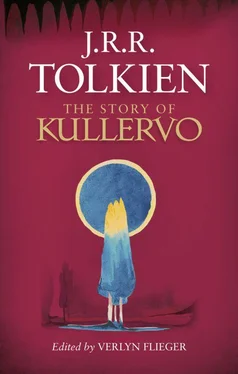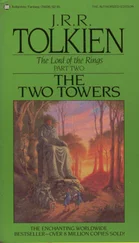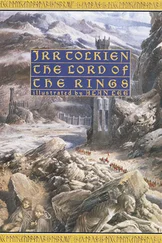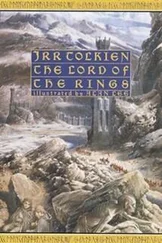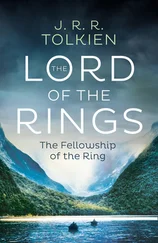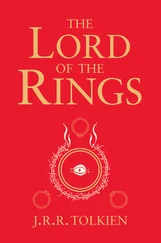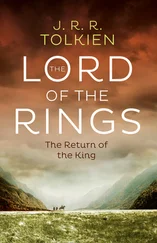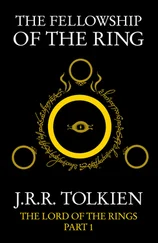Manoine. From its context with ‘daughters of Ilwinti,’ ‘blue meads of Ilwinti,’ and ‘white kine’ (clouds), Manoine is likely to be equivalent to Manatomi as sky or heaven (see Manatomi above).
Ukko. The ancient Finnish thunder-god. The name means ‘old man’, and the diminutive, ukkonen , is a term for thunder. See ‘Ilu’ above.
children of Malōlō. Folio 6 identifies Malōlō as ‘a god, the maker of the earth’. In the preceding lines the daughters are called ‘maidens great and ancient’, and ‘mighty daughters of the Heaven’. They appear to be ancient feminine divinities or spirits.
24 Palikki’s little damsel, Telenda, Kaltūse, Pūlu. Names apparently of Tolkien’s invention.
Kame. Perhaps a variant of Kēme.
25 Terenye maid of Samyan. Folio 6 lists Samyan as ‘god of the forest’, making him the equivalent of (or replacement for) Tapio, whose daughter is Tellervo, also called ‘wind spirit’. Terenye could then be either a forest spirit, a dryad, or akin to the daughters of Ilwinti.
And the women fire will kindle. On Finnish farms smudge fires were lit in the evenings, creating smoke to keep away mosquitoes which bothered the cattle.
26 Honeypaw. Certain wild animals in Northern Europe, such as the bear and the wolf, were considered so powerful that to speak their names was to invite their appearance, with predictable danger to human life. Thus circumlocutions, by-names or descriptions were often used, such as ‘honeypaw’, or ‘bruin’ (brown) or ‘winter sleeper’, or ‘woodland apple’ for the bear. All of these appellations are applied to bears in Kalevala , where the actual word for ‘bear’ is karhu . Tolkien would use this name himself in a 1929 ‘letter from Father Christmas’, in which the North Polar Bear reveals his ‘real name’ as ‘Karhu’. In Tolkien’s poem the smith’s wife calls the bear ‘Uru’ (bear) but she also flatters him with an affectionate-sounding nickname.
27 Kūru. In Folio 6 called ‘The great black river of death’ with possible variant Kuruwanyo. Finnish kuolema is ‘death’, and Tolkien may have formed the name from that base.
30 neatherd. An old word for cattleherder. The word neat is archaic and obsolete, but is specific in distinguishing cattle (cows) and oxen from other domestic hoofed animals such as sheep or goats.
31 Amuntu. In Folio 6 identified as Hell.
Nyelid. The list of names on Folio 6 gives Nyēli as a by-name for Kampa, which is itself a by-name for Kalervo. Nyelid could mean something like ‘of the clan of’. But see ‘The Etymologies’ in The Lost Road , where NYEL- is glossed as ‘ring, sing, give out a sweet sound. Q nyello singer; nyelle bell; T Fallinel ( Fallinelli ) = Teleri [PHAL]. N nell bell; nella - sound bells ; nelladel ringing of bells. Q Solonyeldi = Teleri (see SOL); in Telerin form Soloneldi ’.
32 Men shall hither come from Loke. A place-name apparently equivalent to Lohiu. The similarity to Loki, the name of the Old Norse trickster god, may be intentional. An etymological relationship between Loki and Louhi has been suggested, but cannot be demonstrated.
But shall shudder when they hear them. This and the following two lines are syntactically awkward, and seem to require emendation. The fact that they are also metrically irregular begs for poetic as well as grammatical smoothing. The word I have transcribed as ‘hear’ (and it certainly looks like it) yet has the ‘h’ ascender firmly crossed like a ‘t’. Logically, ‘hear them’ should be followed by ‘of’: ‘hear them of thy fate’, but ‘of’ is not there. ‘To’ is jotted in the margin to the left of, and (confusingly) between, the last two lines. It is capitalized, as if beginning a sentence, but it works better after ‘Woe’, and the final word (or words) is/are illegible. A workable emendation would be ‘But shall shudder when they hear them/ [of] thy fate and end [it is written ‘and’] of terror./ Woe to thou who…’
far Lohiu. Etymologically similar to ‘Louhi’ and ‘Louhiatar’ but here clearly referring to a place, not a personage. See entry for ‘Lōke’ below.
33 Jumala most holy. In Kalevala Jumala is a sacred being, often translated as ‘God’, ‘God on high’, or ‘Creator’. Perhaps originally a pagan figure but assimilated to Christianity.
34 I was small and lost my motherfather / I was young (weak) and lost my mother. Cancelled in the manuscript, the lines are a near direct quote from Kirby’s translation of Kalevala : ‘I was small, and lost my father, I was weak, and lost my mother.’ They are retained here as a possible indication of Tolkien’s personal interest in what he called ‘a very great story and most tragic’. The parallel with Tolkien’s own life — his father died when he four years old, his mother when he was twelve — is self-evident.
Blue-robed Lady of the Forest/Woman of the Forest/Blue Forest Woman. The first title follows that of Kirby’s translation, and Tolkien has added variations on the epithet. Magoun’s translation has ‘green-robed maid of the thicket’, Friburg’s has ‘blue-robed matron of the forest’. The mistress of the forest, traditionally named as Mielikki , is the consort or wife of Tapio, a major woodland deity. The world of Kalevala is full of nature spirits, woodland demi-gods who appear when needed. This one has a particularly portentous role, since it is when Kullervo disobeys her instructions to avoid the mountain that he has the fated meeting with his sister.
35 Louhi’s daughter. Almost certainly an error for ‘Koi’s daughter’, the smith’s wife.
36 daughter of Tapio. A dryad, a woodland spirit.
Tapio. God of the forest.
37 the wife of Ilmarinen. A mistake for Āsemo. Ilmarinen is the smith in Kalevala and Tolkien originally kept the name, then changed it to Āsemo (see above).
40 wailing ‘Kivutar’Kullervo’s sister apparently was at one stage of composition to have had the name (possibly a nickname) Kivutar . At the top of Folio 22 verso is written a brief list of names:
Kalervo — Paiväta
Kiputyltö — maiden of pain — his wife;
Kivutar — daughter of pain — his daughter.
Louhiatar — name of Smith’s wife
Saari — Kalervoinen — the hero
Both Kiputyltö and Kivutar are formed from Finnish kipu , ‘pain’. In his translation of Kalevala Friburg calls Kiputyltö ‘Pain Maiden’; Magoun calls her ‘Pain Girl’ and translates Kivutar as ‘Pain Spirit’ and identical with ‘Pain Girl’ (i.e. ‘maiden of pain.’). Kirby leaves the names untranslated.
Introduction to the Essays
Unlike the story, Tolkien’s essay on the Kalevala exists in two states, one a rough draft manuscript with paragraphs numbered for reorganization, and the other a fair copy typescript. They are catalogued together as Bodleian Library MS Tolkien B 61, folios 126–60. The manuscript, in ink over pencil and heavily emended, consists of twenty-four not always consecutive pages plus an additional, smaller folio (not included here) containing fragmentary jotted notes on both sides. The typescript, which has only occasional emendations in ink, is on lined paper with ruled margins. The text comprises nineteen single-spaced pages, and breaks off in mid-sentence at the very bottom of page 19.
Читать дальше
